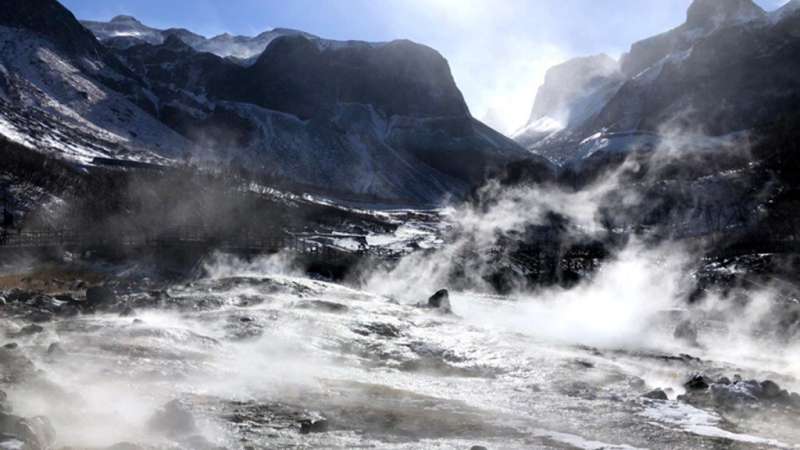This article has been reviewed according to Science X's editorial process and policies. Editors have highlighted the following attributes while ensuring the content's credibility:
fact-checked
proofread
Do volcanoes add more carbon than they take away?

In a new study published in the Journal of Geophysical Research: Biogeosciences, Zhong and colleagues discovered that a volcano in northeast China emits a small net amount of carbon each year. Over geological timescales, that could have a significant impact on our planet's carbon cycle.
Volcanic areas continue to emit carbon dioxide long after eruptions are over. Conversely, atmospheric carbon dioxide (CO2) is constantly locked away into minerals on Earth's surface through a process called silicate weathering. Whether volcanoes release more CO2 through degassing or capture more CO2 through silicate weathering is an open question.
The authors of the new study investigated whether the Changbaishan volcanic area in northeast China is a net source or sink of atmospheric carbon. The region has been active for at least 2.7 million years, but it has not erupted since 1903, making the area a prime spot for analyzing long-term carbon leakage.
Over the course of two field seasons, in 2019 and 2020, the study authors scoured the Changbaishan region for rivers and streams. They collected water samples from around two dozen sites and used radiocarbon dating to estimate the amount of "deep carbon," meaning carbon from the depths of Earth, that had seeped into the water. They compared deep carbon estimates to estimates of carbon incorporated into minerals through silicate weathering.
The researchers found that the Changbaishan region is a small net carbon source. Every year, the region releases at least 600 more tons of carbon than it incorporates—about the amount that 41 average Americans put into the atmosphere on an annual basis. That seems small, but over geological timescales, the impact could be significant.
The Changbaishan volcanic region is just one of many around the world, the researchers point out. Future work should examine wider areas to gain a full understanding of how volcanoes contribute to Earth's carbon cycle.
More information: Jun Zhong et al, Assessing the Deep Carbon Release in an Active Volcanic Field Using Hydrochemistry, δ 13 C DIC and Δ 14 C DIC, Journal of Geophysical Research: Biogeosciences (2023). DOI: 10.1029/2023JG007435
Provided by Eos
This story is republished courtesy of Eos, hosted by the American Geophysical Union. Read the original story here.




















